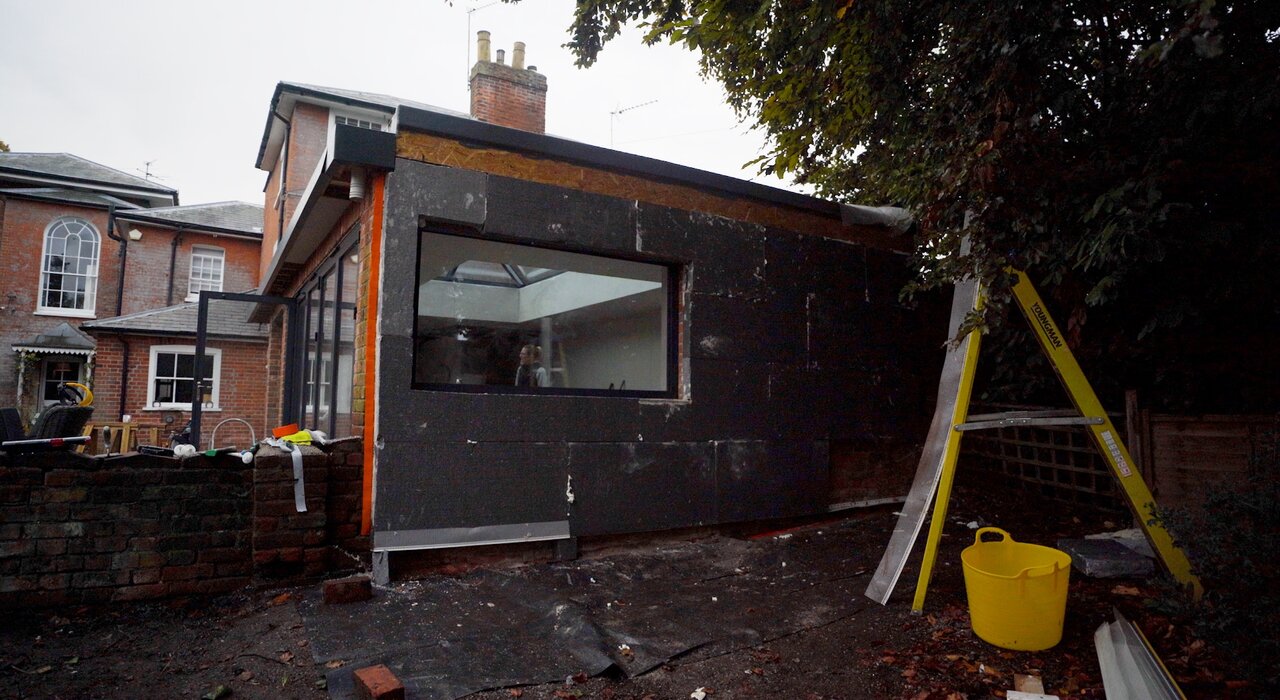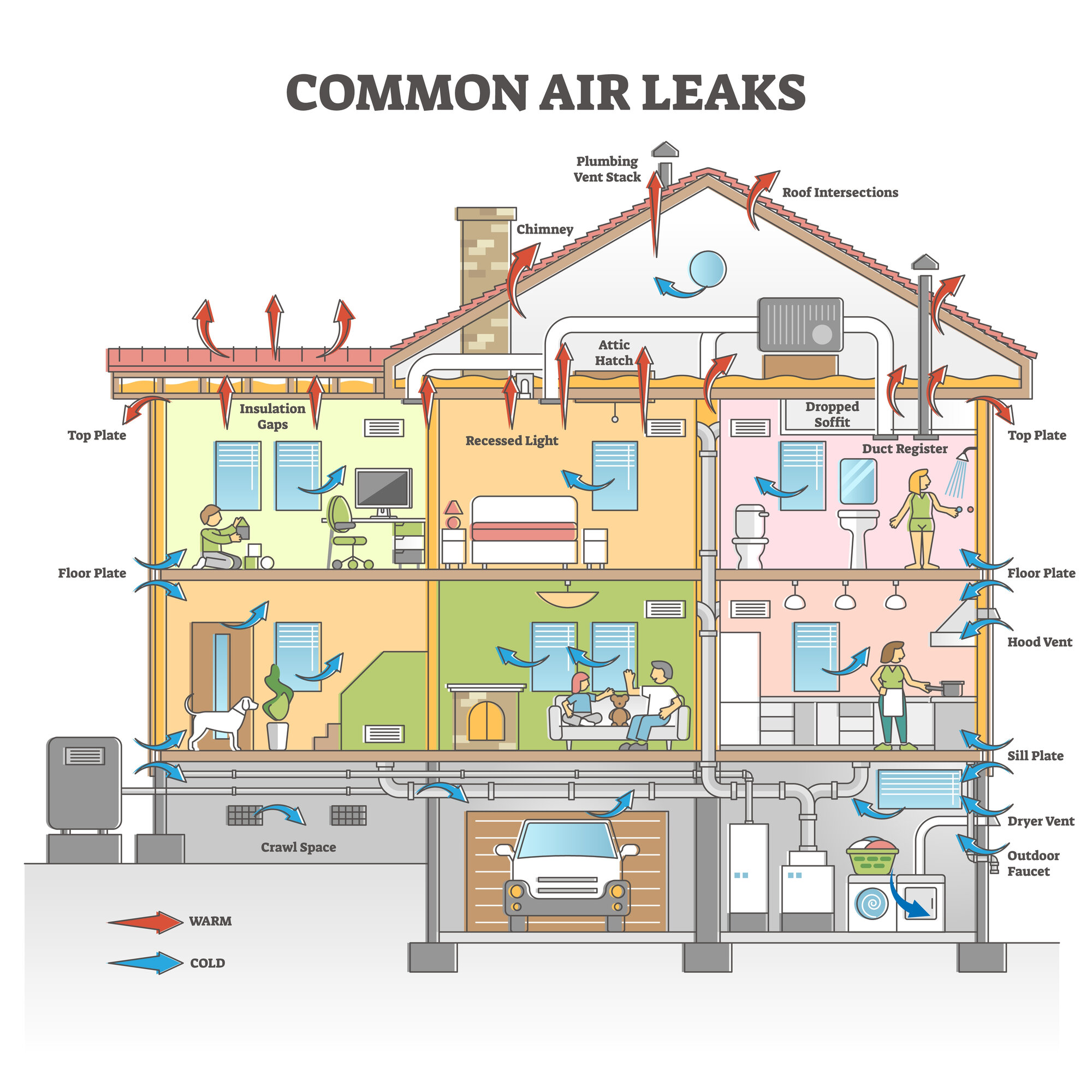
The purpose of installing external wall insulation is to create a thermal envelope. Therefore, it is crucial that this envelope is uninterrupted. Whilst this does include the floors and roof, the external walls are the most impactful. Approximately 35% of heat loss is through the exterior walls. If you choose only to insulate one wall, the impact on energy saving will be negligible. A whole host of other issues will also impact your home, including damp and thermal bridging.
Thermal loss occurs through various means, including conduction, thermal bridging, and infiltration.
Conduction - Heat can be transferred directly through the building materials, from the warm interior to the cooler exterior. This process, known as conduction, is the primary way heat is lost through external walls. The rate of heat transfer depends on the thermal conductivity of the material - the higher the thermal conductivity, the faster the heat loss.
Thermal Bridging - Thermal bridging refers to parts of the building envelope that have higher thermal conductivity than the surrounding materials. Common thermal bridges include wall studs, window and door frames, and places where the insulation is not continuous, such as at the junction between the wall and the floor or roof. These thermal bridges can significantly increase the rate of heat loss.
Infiltration - Heat can also be lost through cracks and gaps in the external walls, due to the process of infiltration (or air leakage). This often happens around windows and doors, or where there are penetrations for pipes and cables. This type of heat loss can be reduced by sealing these gaps and cracks.
Thermal bridging when you insulate one wall
Thermal bridging is a significant factor that can negatively impact a building's energy efficiency, indoor moisture levels, and temperature consistency. A holistic approach to insulation, considering all parts of the building envelope (walls, roof, floor), is crucial to minimise thermal bridging, maximise energy efficiency, and ensure a comfortable and healthy indoor environment. It's also important to consider other factors, such as the installation of a proper vapour barrier and adequate ventilation, to further control moisture levels and prevent condensation issues.
Energy efficiency
Insulation functions by creating a barrier to the flow of heat. Thus, constant internal temperature regardless of external conditions is maintained. If you insulate one wall, that wall will be effective in reducing heat transfer, but the other non-insulated walls, as well as the floor, roof, windows, and doors, can still allow heat to escape or enter. This means your heating or cooling systems will have to work harder to maintain the desired temperature. As a result, the home will have higher energy consumption and costs. In cold climates, heat will escape more rapidly from non-insulated parts of the building. Conversely in hot climates, the heat will enter more easily. Hence, for an effective energy conservation strategy, a comprehensive insulation approach is typically more beneficial.
Thermal bridging refers to the phenomenon where heat or cold transfers across an object that is more conductive than the materials around it. In the context of a building, this often means the heat is escaping more readily through certain parts of the building's envelope—like its walls, roof, and floor. If you insulate only one wall, the non-insulated walls become significant thermal bridges. The Government regulations dictate the following:
'Walls: insulation should be fitted without any air gaps and tight to the structure, cavity closers, lintels and cavity trays. Mortar snots should be removed to ensure a tight fit with the structure and cavities cleared of all debris. Where fire-stopping socks are required, these should fully fill the areas where they are fitted, including at the heads of cavities.' (Conservation of fuel and power, UK Government)
Condensation
When warm air comes into contact with a cooler surface, it can cause condensation. The air cools and loses its capacity to hold moisture. If only one wall is insulated, the warm, moist air inside the building is prevented from escaping through that wall. However, it still comes into contact with the colder, non-insulated walls, causing condensation. Over time, this can lead to problems like dampness, mould growth, or even structural damage. An even distribution of insulation can help reduce the risk of such condensation-related issues.
Thermal bridges can also exacerbate problems with condensation. In a building with significant thermal bridging (such as a building where only one wall is insulated), the interior surfaces of the thermal bridges (the non-insulated walls) will be cooler. This makes them prime spots for condensation, especially if the building is not adequately ventilated. Over time, this condensation can lead to dampness, mould growth, and even structural damage.
Temperature inconsistency
If only one wall of a building is insulated, you could end up with uneven temperatures within the space. The area near the insulated wall might be noticeably warmer in the winter or cooler in the summer than areas near non-insulated walls. This could lead to discomfort and the need to use heating or cooling systems more, increasing energy use and cost. To ensure a consistent, comfortable indoor temperature, it's important to insulate all exterior walls, not just one.
Similarly, thermal bridges can lead to temperature inconsistencies within a building. Because heat moves more easily through thermal bridges, rooms that have more contact with these areas (like rooms adjacent to a non-insulated wall) will be colder in the winter and hotter in the summer than rooms that are surrounded by insulated walls.
Building codes and regulations
Many localities have building codes or regulations that dictate the levels of insulation required in new buildings or significant renovations. These rules are designed to ensure energy efficiency and safety. Insulating only one wall may not meet these standards, which could lead to fines or the need for costly retrofitting. Before you begin any insulation project, it's important to understand and comply with all relevant building codes.
Any retrofit within the UK needs to achieve a minimum U-value of 0.3W/m²K. Therefore, insulating just one wall cannot bring down the U-value of your home to that level. The building requires a complete thermal envelope, with the thickness determined by the type of insulation boards chosen.
Resale value
Insulation is an important aspect of a building's overall efficiency and comfort. When a building is properly insulated, it can be a selling point because it indicates lower energy costs and a more comfortable living or working environment. Insulating only one wall may raise questions for potential buyers or renters about the quality and efficiency of the building. Therefore, full insulation could be a valuable investment for improving resale or rental value.
Potential buyers would also be reticent when assessing your property. Completing a full thermal envelope is a costly endeavour. Moreover, this expenditure can be exasperated by the need to remove previous insulation, like the one initially chosen for a single wall.


